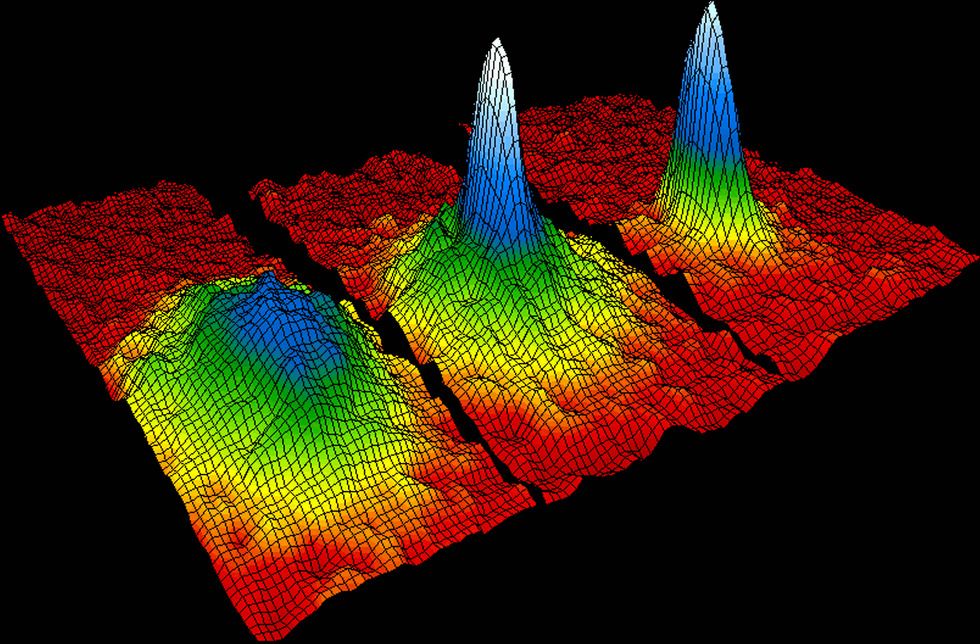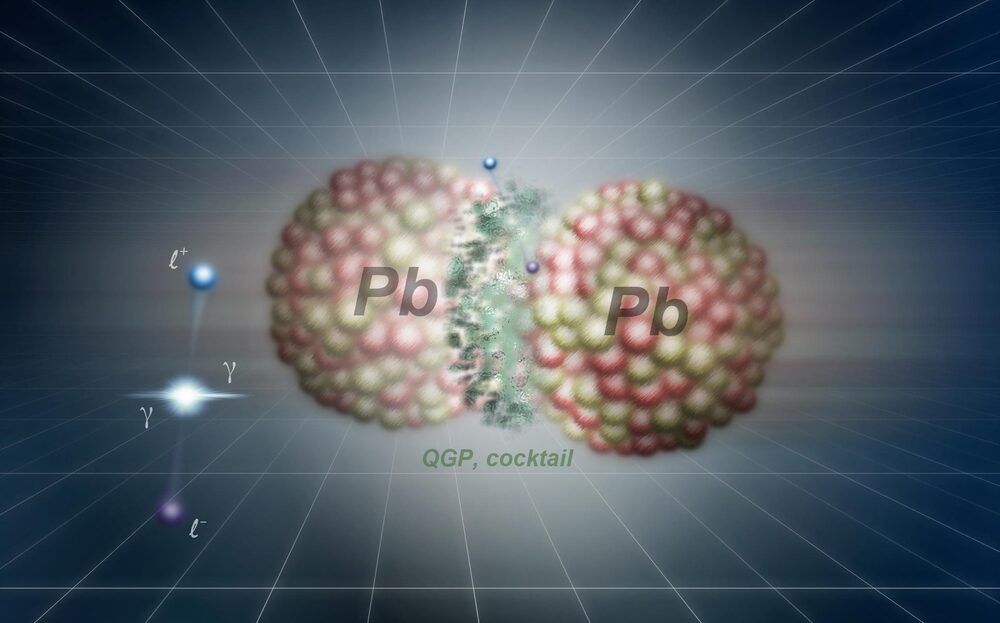Scientists create a superfluid with negative mass that accelerates backwards.


Biobots could help us with new organs! 😃
Computer scientists and biologists have teamed up to create a creature heretofore unseen on Earth: a living robot. Made from the cells of frogs and designed by artificial intelligence, they’re called xenobots, and they may soon revolutionize everything from how we fight pollution to organ transplants.
#Xenobots #Moonshot #BloombergQuicktake.
——-
Like this video? Subscribe: https://www.youtube.com/Bloomberg?sub_confirmation=1
Become a Quicktake Member for exclusive perks: https://www.youtube.com/bloomberg/join.
QuickTake Originals is Bloomberg’s official premium video channel. We bring you insights and analysis from business, science, and technology experts who are shaping our future. We’re home to Hello World, Giant Leap, Storylines, and the series powering CityLab, Bloomberg Businessweek, Bloomberg Green, and much more.
Subscribe for business news, but not as you’ve known it: exclusive interviews, fascinating profiles, data-driven analysis, and the latest in tech innovation from around the world.

For that, they will need the quantum equivalent of optical repeaters, the components of today’s telecommunications networks that keep light signals strong across thousands of kilometers of optical fiber. Several teams have already demonstrated key elements of quantum repeaters and say they’re well on their way to building extended networks. “We’ve solved all the scientific problems,” says Mikhail Lukin, a physicist at Harvard University. “I’m extremely optimistic that on the scale of 5 to 10 years… we’ll have continental-scale network prototypes.”
Advance could precisely link telescopes, yield hypersecure banking and elections, and make quantum computing possible from anywhere.

All cells on Earth are made of phospholipid membranes. Now astronomers have found the component molecules in interstellar space.
One potential explanation is that the Earth was seeded from space with the building blocks for life. The idea is that space is filled with clouds of gas and dust that contain all the organic molecules necessary for life.
Indeed, astronomers have observed these buildings blocks in interstellar gas clouds. They can see amino acids, the precursors of proteins and the machinery of life. They can also see the precursors of ribonucleotides, molecules that can store information in the form of DNA.
But there is another crucial component for life – molecules that can form membranes capable of encapsulating and protecting the molecules of life in compartments called protocells. On Earth, the membranes of all cells are made of molecules called phospholipids. But these have never been observed in space. Until now.

O,.o! Woah
When heavy ions, accelerated to the speed of light, collide with each other in the depths of European or American accelerators, quark-gluon plasma is formed for fractions of a second, or even its “cocktail” seasoned with other particles. According to scientists from the IFJ PAN, experimental data show that there are underestimated actors on the scene: photons. Their collisions lead to the emission of seemingly excess particles, the presence of which could not be explained.
Quark-gluon plasma is undoubtedly the most exotic state of matter thus far known to us. In the LHC at CERN near Geneva, it is formed during central collisions of two lead ions approaching each other from opposite directions, traveling at velocities very close to that of light. This quark-gluon soup is also sometimes seasoned with other particles. Unfortunately, the theoretical description of the course of events involving plasma and a cocktail of other sources fails to describe the data collected in the experiments.
In an article published in Physics Letters B, a group of scientists from the Institute of Nuclear Physics of the Polish Academy of Sciences in Cracow explained the reason for the observed discrepancies. Data collected during collisions of lead nuclei in the LHC, as well as during collisions of gold nuclei in the RHIC at Brookhaven National Laboratory near New York, begin to agree with the theory when the description of the processes takes into account collisions between photons surrounding both interacting ions.

Microsoft keeps hinting at a new version of Windows.
Microsoft has been teasing a “next generation” of Windows for months now, but new hints suggest the company isn’t just preparing an update to its existing Windows 10 software, but a new, numbered version of the operating system: Windows 11.
The software giant announced a new Windows event for June 24th yesterday, promising to show “what’s next for Windows.” The event invite included an image of what looks like a new Windows logo, with light shining through the window in only two vertical bars, creating an outline that looks very much like the number 11. Microsoft followed up with an animated version of this image, making it clear the company intentionally ignored the horizontal bars.

Smashing together lead particles at 99.9999991 percent the speed of light, scientists have recreated the first matter that appeared after the Big Bang.
Out of the wreck came a primordial type of matter known as quark-gluon plasma, or QGP. It only lasted a fraction of a second, but for the first time, scientists were able to probe the plasma’s liquid-like characteristics – finding it to have less resistance to flow than any other known substance – and determine how it evolved in the first moments in the early Universe.
Circa 2017
Scientists in the Netherlands say they are close to a breakthrough which will allow crops to be grown in deserts. Many say this could completely alter life on the African continent and even end hunger.
World leaders meeting at the climate talks in Germany are being urged to commit to more funding for new agricultural projects in drought-stricken parts of the world.
Al Jazeera’s Laurence Lee reports from the Netherlands.
- Subscribe to our channel: http://aje.io/AJSubscribe.
What if you could give a plant the perfect day, every day? Give it the optimum level of light, water, temperature and humidity, so that it grows to be as nutritious, fresh and delicious as it can possibly be? Meet the team at CubicFarms, helping growers around the world do just that, at commercial scale.
In our series, Real Food, we take a look at the growing trend of vertical farming. Companies like Aerofarms are rethinking how we grow vegetables by going up to provided fresh and affordable produce. Michelle Miller reports.
Watch “CBS This Morning” HERE: http://bit.ly/1T88yAR
Watch the latest installment of “Note to Self,” only on “CBS This Morning,” HERE: http://cbsn.ws/1Sh8XlB
Follow “CBS This Morning” on Instagram HERE: http://bit.ly/1Q7NGnY
Like “CBS This Morning” on Facebook HERE: http://on.fb.me/1LhtdvI
Follow “CBS This Morning” on Twitter HERE: http://bit.ly/1Xj5W3p.
Follow “CBS This Morning” on Google+ HERE: http://bit.ly/1SIM4I8
Get the latest news and best in original reporting from CBS News delivered to your inbox. Subscribe to newsletters HERE: http://cbsn.ws/1RqHw7T
Get your news on the go! Download CBS News mobile apps HERE: http://cbsn.ws/1Xb1WC8
Get new episodes of shows you love across devices the next day, stream local news live, and watch full seasons of CBS fan favorites anytime, anywhere with CBS All Access. Try it free! http://bit.ly/1OQA29B
–